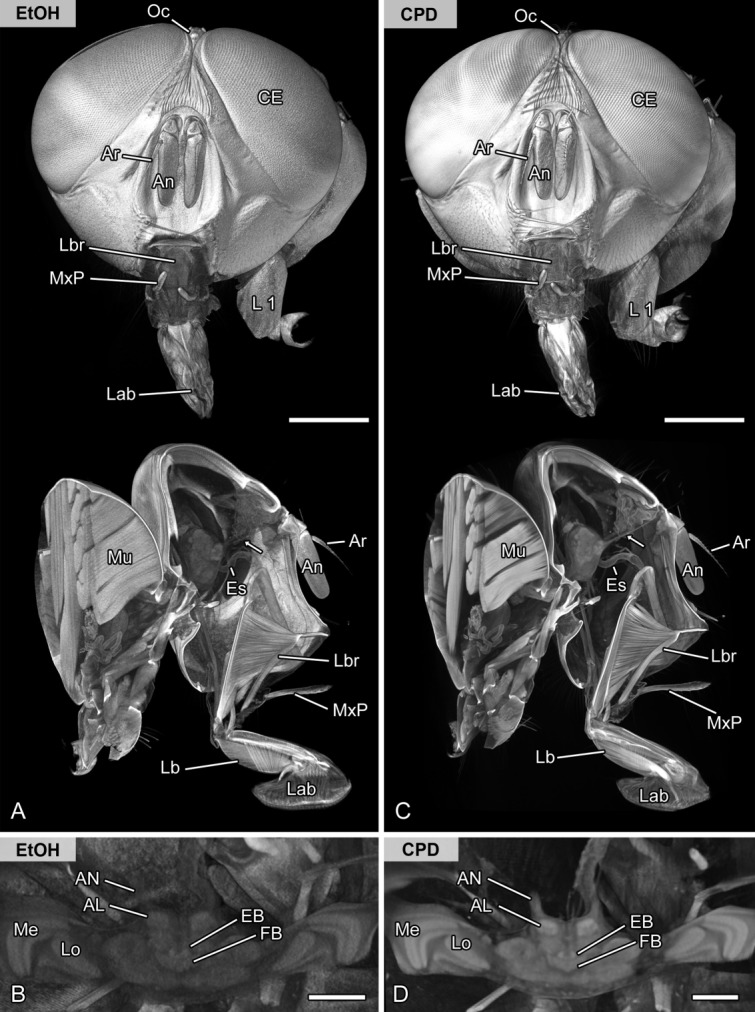Figure 3.

Methodological evaluation of different media (ethanol vs. air). Volume rendering (voltex rendering) and virtual sections of the head and brain of the same specimen of the blow fly Lucilia sp. scanned in ethanol (A,B) and after critical point drying (C,D). A,C: Frontal and sagittal representation of the blow fly head. Externally, the critical point dried sample results in less noise and consequently more details. Internally, structures such as the antennal nerve (arrow) and the antennal lobe are better resolved. B,D: Virtual horizontal sections of the brain illustrating the central complex and optic neuropils. The signal to noise ratio is also higher in the critical point dried sample. Abbreviations: AL, antennal lobe; An, antenna; AN, antennal nerve; Ar, arista; CE, compound eye; CPD, scanned after critical point drying; EB, ellipsoid body; Es, esophagus; EtOH, scanned in pure ethanol; FB, fan-shaped body; L1, thoracic leg 1; Lab, labellum; Lb, labium; Lbr, labrum; Lo, lobula; Me, medulla; Mu, musculature of the thorax; MxP, maxillary palp; Oc, ocellus. Scale bar = 1 mm in A,C; 200 µm in B,D.
